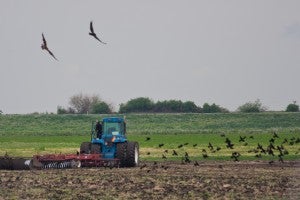Are we giving farmers enough credit for stewardship?

At Environmental Defense Fund, we believe in the power of incentives to drive agricultural sustainability. That’s why we support emerging markets like California’s Central Valley Habitat Exchange and the state’s fledgling cap and trade market, which will soon allow rice growers to earn extra revenue.
Both markets reward farmers for improving the environment in specific ways.
The Central Valley Habitat Exchange, when it becomes operational, will allow farmers who create enhanced habitat for at-risk species to sell credits to businesses and agencies that need to meet conservation goals.
By contrast, the proposed offset market for rice – which is set for a Dec. 18 vote by the California Air Resources Board – will allow U.S. rice farmers to earn credits for reducing greenhouse gas emissions from rice cultivation.
Different markets, different rules
Each market prescribes a set of practices for attaining the desired environmental outcome. The proposed rice standard, for example, identifies three practices for cutting methane emissions: dry seeding, early drainage, or alternate wetting and drying.
But what if these practices create additional environmental benefits beyond reducing a farmer’s GHG footprint, such as creating good habitat for the giant garter snake? Should the farmer earn credits for that too? If so, how? Through new markets? And how many credits should they earn? Is one market outcome more valuable than the other? How do we avoid double counting?
Workshop on coordinating markets
EDF has been exploring these issues and the dynamic relationships between environmental benefits.
On December 8, we will convene other experts working on this pioneering concept for a workshop ahead of the ACES (A Community on Ecosystem Services) conference. At this workshop, we’ll facilitate a discussion on how to achieve better biodiversity outcomes by coordinating environmental markets.
Environmental markets have been around for a while, but they’ve basically operated in silos, not really interacting with one another. As new markets come online for everything from water quantity and water quality to biological diversity and greenhouse gas reductions, they are likely to overlap on the same piece of land.
It’s time to work through the challenge of coordinating markets now, to ensure we’re giving farmers enough credit for their stewardship in the future.
A comprehensive approach
We don’t have the answers for how exactly to coordinate markets just yet. At the workshop, we’ll consider a few key points:
- How to scientifically measure the outcomes from certain management practices, and the interactions between practices and outcomes;
- Understanding how producers can participate in multiple environmental markets effectively, and;
- How to do so in a way that meets legal requirements and avoids double counting of benefits.
This approach requires thinking about all of the dynamic parts of a farmer’s operation. It’s a worthy and exciting pursuit, because coordination could unlock the key to providing climate solutions, biodiversity, revenue and recognition to those land managers who go above and beyond in their stewardship role.
Be sure to follow the ACES conference and our panel on @GrowingReturns, @SaraESnider and @DrStacySmall!












